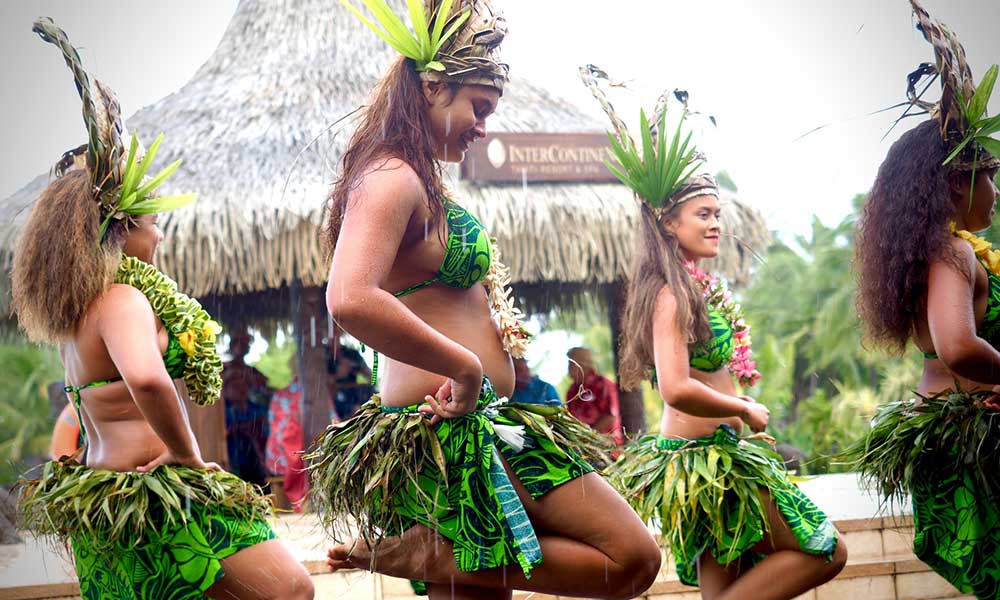Hula dancing represents a religious dance that is performed by professional dancers while standing or sitting.
The dance often includes many types of changes and gestures. It’s a reference to the Hawaiian’s spirituals root as they honor a Hawaiian god or goddess. Hula dancing has been practiced since ancient times and evolved during the 19th and 20th centuries.
The hula dance was originally developed by the Polynesians in the Hawaiian Islands.
Famous Hula Dancers
Beverly Noa is one of the most famous hula dancers and is considered to be hula royalty.
She was once Miss Hawaii and passed away in 2017 at the age of 84.
She stood out for her graceful performances and became famous for her dance called “Lovely Hula Hands.”
Kumu Hula Mark Keali’i Ho’omalu is a popular hula dancer that teaches dance and choreographs different dances.
In 2003, he founded the Academy of Hawaiian Arts and has won many awards over the years.
He even sang the introduction song for the Disney film “He Mele No Lilo” and has a song featured in the movie “Lilo and Stitch.”
Why Is Hula Dancing Important To Hawaii?
Hula dancing is important to Hawaii because it’s a long-standing culture practice that continues to grow and evolve.
Hawaiians honor and respect the dancing because it has a lot of significance and has been preserved as it’s been passed down to many generations.
The gestures and movements are considered to be a bridge for those who haven’t learned the language.
It shares a trove of stories, which connect different dancers and their audiences.
The storytelling and can be paired with contemporary music or chants to communicate empowering truths.
Hula is known to animate prophecy, history, and genealogy of the ancestors and is a way to carry on their lives. You can frequently see hula dancing at Hawaiian luaus.
Why Was Hula Banned In Hawaii?
From 1819 to 1874, hula was banned in Hawaii because many Christian Hawaiians started to view it as immoral and impure.
Queen Ka’ahumanu, who converted to Christianity, decided to make public performances of the dance illegal in 1830. Many Christian missionaries had influenced her decision.
Several years later, the queen died, which is when public performances began to become common again.
How to Hula Dance & Hula Lessons
Looking for a hula dance lesson on Oahu, Hawaii?
We have two options for you.
One on the south shore in Waikiki and one on the north shore of Oahu. You can also see hula dance performances at these locations if you prefer to spectate.
We also included a DIY virtual hula dance lesson.
Polynesian Cultural Center
Located on the north shore of Oahu, the Polynesian Cultural Center offers hula lessons throughout the day.
You can find more information on their website located at: https://www.polynesia.com/islands-of-hawaii
Royal Hawaiian Center
The Royal Hawaiian Center in Waikiki offers free hula lessons throughout the week.
Find more information on their website: https://www.royalhawaiiancenter.com/
DIY Hula Dance Lesson
There is no need to wait for your next vacation to Hawaii to learn to Hula Dance.
You can get a virtual hula dance lesson right now that will take you through step-by-step.
What Do Hula Dancers Wear?
Female dancers traditionally wear grass skirts or dresses as they practice hula.
Men are known to wear skirts, long shorts, or pants. Men also wear malos, or wrapped cloths, with traditional trousers.
Formal clothing is often worn during slow hula dances that are more graceful and intimate.
It’s common for female dancers to wear muʻumuʻus and for male dancers to wear a type of sash.
Other types of accessories include leis and ankle bracelets that consist of dogs’ teeth or whalebones.
Leis are often traditionally worn to honor the Hawaiian gods and other people.
At the turn of the century, hula dancers started to wear grass skirts throughout the Vaudeville circuit on the mainland.
The grass skirts were convenient to wear because they were inexpensive and lasted a long time.
Traditionally, women were topless when hula dancing was performed hundreds of years ago, but they still wore a skirt.
This type of skirt has evolved and is now a lot longer in length.
A Brief History Of The Hula Dance
Once the Polynesians settled in Hawaii, hula dancing was created.
It was created as a visual dance form as a way of portraying the words of the oli, or chanting.
Traditional instruments and chants accompanied the ancient hula dance, which was originally called kahiko.
Steel guitars and basses have often been used to accompany hula dancing.
There are many different substyles of hula dancing, which include Hula Kahiko and Hula ʻAuana. Today, hula is taught in many different schools.







